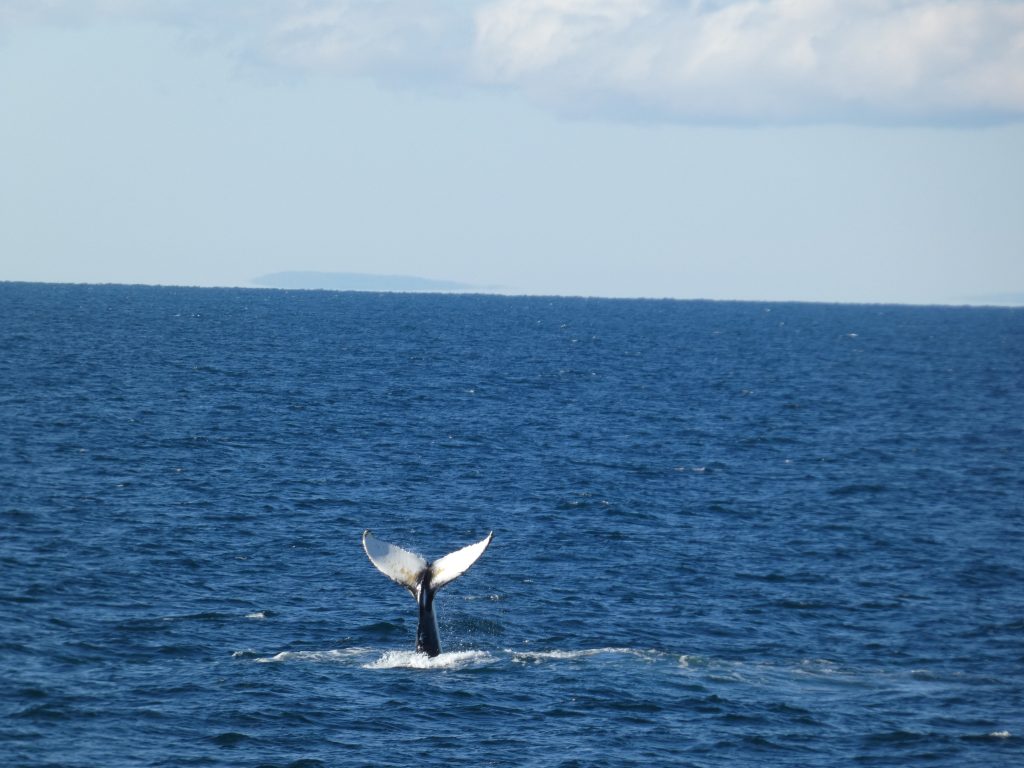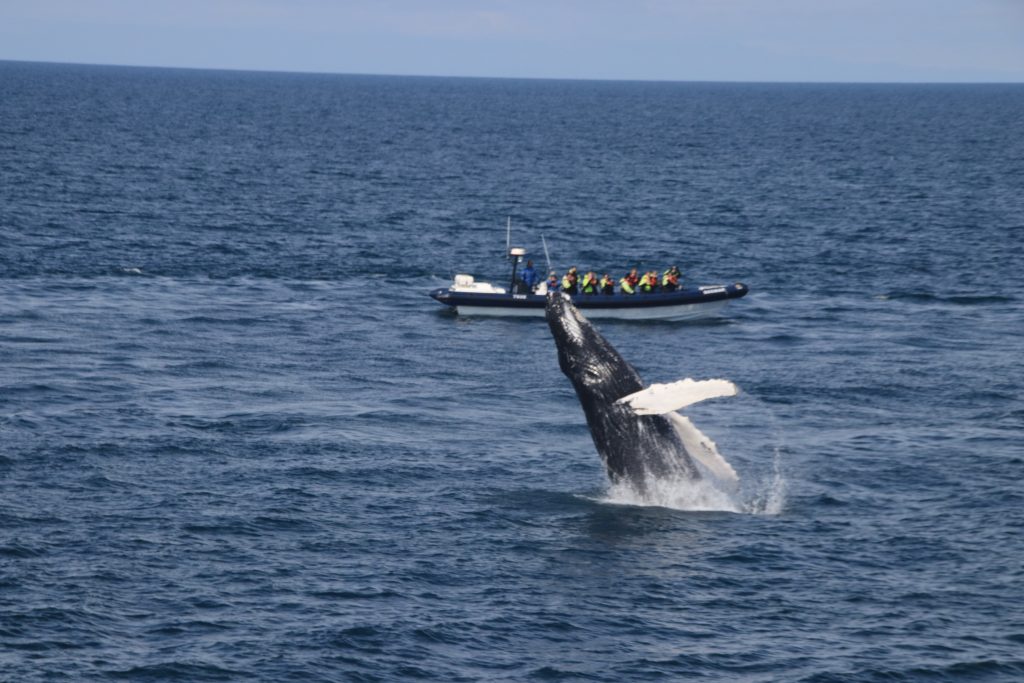Humpback whales are one of the most iconic marine species, known for their beautiful songs and their graceful movements. Every year, humpback whales embark on a long migration from their feeding grounds in the North Atlantic to their breeding grounds in the Caribbean Sea. This journey covers thousands of miles and involves navigating through treacherous waters, avoiding predators, and dealing with changing weather conditions. In this blog post, we’ll take a closer look at humpback whale migration in the North Atlantic, including the waters around Iceland.

Humpback Whale Migration in the North Atlantic
The North Atlantic is home to some of the largest populations of humpback whales in the world. These whales spend the summer months feeding in the cold waters of the North Atlantic, building up their fat reserves for the long journey ahead. As the temperatures start to drop and the days get shorter, the humpback whales begin to feel the pull of their breeding grounds in the Caribbean Sea. They start to make their way south, covering thousands of miles in the process.
The journey takes the humpback whales through some of the most challenging waters in the world, including the Gulf of Maine, the Mid-Atlantic Ridge, and the waters around Iceland. These areas are known for their strong currents, treacherous weather conditions, and diverse marine life.
Humpback Whales Around Iceland
Iceland is a popular destination for humpback whale watching, as the waters around the island are home to large populations of these majestic creatures. The humpback whales that travel through the waters around Iceland are part of a larger population that feeds in the cold waters of the North Atlantic during the summer months.
The humpback whales that pass by Iceland are known for their unique behavior, including breaching, tail slapping, and bubble net feeding. Bubble net feeding is a fascinating behavior that involves a group of whales working together to create a ring of bubbles around a school of fish. The whales then swim up through the bubble net, catching the fish in their mouths.
The Importance of Protecting Humpback Whales
Humpback whales are one of the most studied and well-documented marine species in the world. Despite this, they are still under threat from a variety of human activities, including climate change, pollution, and commercial whaling.
Protecting humpback whales and their habitats is crucial for their survival and for the health of the oceans as a whole. Efforts are underway to protect humpback whales and their habitats, including the creation of marine protected areas and the enforcement of regulations on commercial whaling.
Conclusion
Humpback whale migration in the North Atlantic is a truly remarkable event that has captured the imagination of people around the world. The waters around Iceland are an important part of this migration, as they provide a critical feeding ground for humpback whales during the summer months. Protecting humpback whales and their habitats is crucial for their survival and for the health of the oceans as a whole.
More on whale migration here.










